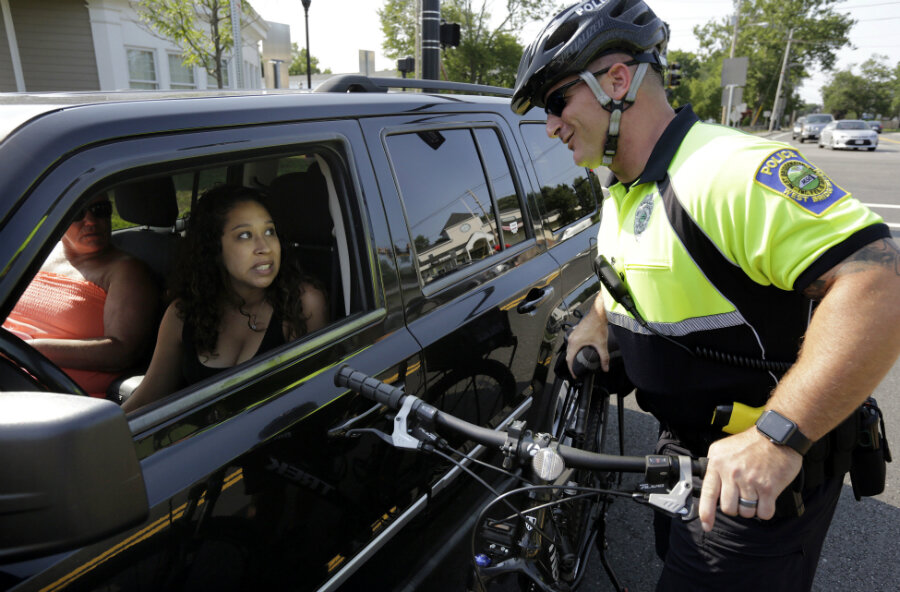Why are distracted driver fatalities on the rise again?
Loading...
Hands-free apps and devices were initially seen as the solution to reducing distracted-driving related traffic fatalities. As drivers became increasingly reliant on their smartphones to navigate, be entertained, and stay connected while on the road, manufacturers and software developers perceived the risks as a matter of dexterity – or lack thereof.
But despite keeping drivers' hands on the steering wheel, the technology has not been accompanied by a decline in the number of fatalities. In fact, crashes have risen at the fastest pace in nearly 50 years, with the biggest increase posed by distraction-related accidents. The sobering numbers reflect a need to examine new strategies to address distracted driving as people become increasingly inseparable from their smartphones.
“It’s the cognitive workload on your brain that’s the problem,” Deborah Hersman, the president of the nonprofit National Safety Council and former chairwoman of the federal National Transportation Safety Board, told The New York Times, pointing out that the various technologies may have “encouraged people to use even more functions on their phones while driving.”
According to the National Highway Traffic Safety Administration (NHTSA), 35,092 people died in crashes on US roadways in 2015. Fatalities caused by distraction rose by 8.8 percent, representing the biggest change.
Young drivers, in particular, are especially prone to this type of crash, as evident from recent cases of collision involving teenage drivers crashing while using Snapchat. According to NHTSA, drivers aged between 15 to 19 years old represent the largest proportion of drivers distracted at the time of crashes.
There are some technologies in place to block calls or texts when a person is driving, as well as gears that can orient screens to a more suitable place on the car dashboard where a driver’s eyes won’t have to drift too far from the road. General Motors in 2014 also experimented with a system that can detect distracted drivers.
But one of the most attractive solutions floated so far is the introduction of autonomous cars, an experiment currently carried out by companies such as Tesla, Uber, and Google. The US Department of Transportation has pledged annual grants to further develop the technology.
"The clear theme is human error and inattention," Chris Urmson, the former head of Google's self-driving program, wrote in a blog post in 2015. "Our self-driving cars can pay attention to hundreds of objects at once, 360 degrees in all directions, and they never get tired, irritable or distracted."
Self-driving cars are programmed to avoid collisions and follow traffic rules, thus erasing factors of driver distraction or fatigue from causing accidents. Implementing the new technology, however, still holds challenges.
Several crashes with autonomous vehicles have occurred when they collided with distracted drivers, indicating that unless all the cars on the road are autonomous, human errors will still be a factor causing traffic fatalities.






